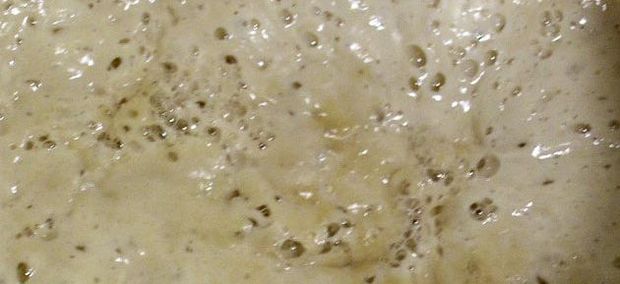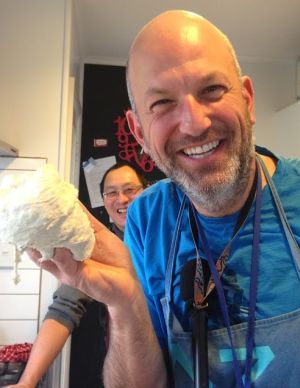Part 3: The science of sourdough
The idea of fermentation, using bacteria and yeast to transform our food has been around for millennia. We started farming 100,000 years ago; from hunter gatherer to farmer, suddenly we had seasonal crops that led to surplus foods at harvest time. Some of it spoiled, rotted or went mouldy, but some bright spark realised that this ‘rot’ can actually make food taste better and is a great way to preserve some foods too.
Fast forward to today and many of the foods we enjoy rely on this natural ‘rotting’ (fermentation) process of micro-organisms looking for energy so they can reproduce. To think all this is happening on your salami, in your soy sauce and beer, your wine and cheese and of course in your sourdough bread!
What’s actually happening in the floury gloop that we call a sourdough starter? It’s a complex system, a living community of lactic acid bacteria and yeast that we’re only just beginning to understand. The bacteria eat carbohydrate and excrete acid, which lower the pH level keeping other bacteria away. Meanwhile the yeast tolerates an acidic environment nicely, and the yeast excretes carbon dioxide that helps the bread rise.
Where does most of the micro flora come from? What has the biggest impact on your sourdough community, the flour, the water or the wild microbes in your home?
Links
- Microbial ecology of sourdough fermentations: diverse or uniform? Research Group of Industrial Microbiology and Food Biotechnology
- Could 100-year-old sourdough be a myth? BBC Food
- Could home fermenting catch on? The Guardian

A sourdough starter fermenting.

Making sourdough with Simon Morton.
- Part 1: Making tasty sourdough bread at home
- Part 2: Getting started and making a sourdough starter
- Part 3: The science of sourdough
- Part 4: The pre-ferment
- Part 5: The prove & the bake
- Image gallery: Sourdough
Some excellent sourdough sites
- Susan's Wild Yeast Blog – she is a fantastic baker and her blog site is world-class.
- Northwest Sourdough
- The Fresh Loaf